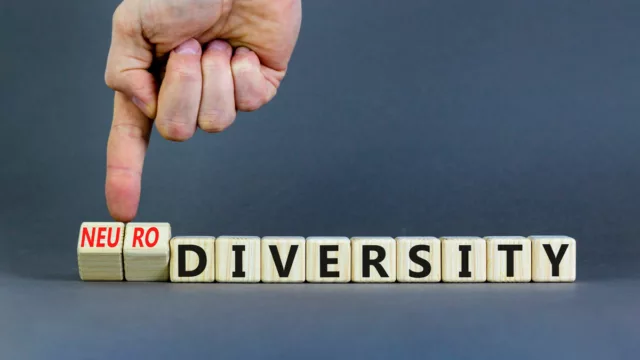Supporting your Employee through Gender Reassignment

Over recent years we have seen the need for a better understanding of gender reassignment within the workplace. There is often a lack of understanding and knowledge on how to support people who are experiencing gender change.
Use correct pronouns and language
In any organisation, employees who feel welcome and valued in their workplace are inevitably going to be more productive and loyal to the company. In this context, it makes sense for businesses to ensure that inclusive language is used and that no one is left feeling excluded by the use (intentional or otherwise) of inappropriate terms.
Here is some terminology you might find useful to know and understand, when speaking or writing about transgender people:
- Trans or Transgender – this is when someone doesn’t identify with the sex they were assigned at birth
- Non–binary – someone who doesn’t identify as either sex
- Cisgender or Cis – when your identity matches the sex you were assigned at birth
- LGBTQ+ – lesbian, gay, bisexual, trans, queer plus non-straight gender identity
- LGBTQIA – as above, however, I is intersex and A is A-sexual
Terms which are now considered outdated or offensive:
- Transexual
- Transvestite
- Crossdresser
- Transgendered
- Sex change surgery
- Pre or post-operative
- Identifies as male/female
In many cases, it will be possible to use gender-neutral language to encompass all employees regardless of how they identify. A good place to start is with the company’s Employee Handbook and any other policies and procedures – using ‘they’ and ‘them’ throughout improves inclusivity. Another way of achieving this can be to allow employees to indicate their preferred pronouns for use in their email signature. One suggestion is to ask transgender people within your workplace to understand how they would like to be referred to. This ensures that you do not cause any offence and can offer guidance to your team on the correct pronouns to use (he/she/they etc).
“Full of actionable content”
“I had a couple of great seminars with MAD-HR - both of them were presented well and full of useful and immediately actionable content.” Read the full review
What does the law say about Gender Reassignment?
Equality Act 2010
Gender reassignment is a protected characteristic under the Equality Act 2010. The act states that:
“A person has the protected characteristic of gender reassignment if the person is proposing to undergo, is undergoing or has undergone a process (or part of a process) for the purpose of reassigning the person’s sex by changing physiological or other attributes of sex”
It is important to note that someone doesn’t actually have to be going through a medical treatment to be protected by the Equality Act, just to have proposed to undergo gender reassignment.
As an employer, you must not directly or indirectly discriminate, harass or victimise an employee or job applicant due to gender reassignment. If you do not allow people to take time off to have counselling or medical appointments that could also be deemed as discrimination. One other thing to be mindful of is that if you have absence triggers, you may end up treating someone less favourably for absences relating to gender reassignment, so you may want to discount any hospital appointments from that process.
Gender Recognition Act 2004
The Gender Recognition Act 2004 allows a trans person (over the age of 18) to apply for legal recognition of their acquired gender once they have lived in their acquired life for two years and intend to continue for the rest of their life. On their passport though, it will still identify them as the gender they were born as.
Under the UK GDPR and Data Protection Act 2018 gender identity and reassignment will be a special category data and it is a criminal offence for someone in an official capacity, e.g. HR, who has acquired this information to disclose it to anyone else. There is no obligation for someone to tell you about their gender change.
Best practice approach
Establish a zero-tolerance policy on Transphobia
Establishing clear policies within your workplace and ensuring organisations take a zero-tolerance approach to transphobia is crucial. A Totaljobs poll found that more than half (54%) of trans employees surveyed, said their employer did not support their trans workforce through training, and only a third (36%) said their employer had dedicated anti-trans discrimination policies. The zero-tolerance approach should also apply to interactions between employees and external contacts such as customers and suppliers. An Equality, Diversity and Inclusion Policy should signpost employees on how to report any transphobic behaviour or comments and include a commitment that the employer will take these reports seriously and act on them.
Equality, Diversity and Inclusion
A lot of organisations are now carrying out valuable training for Equality, Diversion and Inclusion which helps keep workforces knowledgeable and it is important for retaining a diverse workforce. However, many organisations do not promote the great things they are doing externally, which is a missed opportunity to positively contribute to attracting a more diverse workforce. One thing organisations can do is use gender-neutral language on application forms, adverts, job descriptions.
Updating your handbook and policies to reflect neutral terms and even creating a Transgender policy can help provide a more inclusive working environment. It demonstrates a commitment from the organisation and its senior leaders to supporting transgender colleagues and shows they promote equal treatment and equality as core business values.
It is important to create a working environment where everyone can feel safe to be themselves, whomever that may be, allowing everyone to focus their efforts on delivering the organisation’s goals.
Practical steps to consider
Consider gender-neutral facilities
There are some practical steps that you will also need to consider within the workplace. You may want to look at, where possible, offering gender-neutral facilities, whilst maintaining single-sex facilities for those who maybe feel uncomfortable using gender-neutral ones. It is important to remain as inclusive as possible. The ACAS guidance states that people should not be instructed to use a particular toilet.
Gender Equality Training
Try to be proactive and introduce training courses for staff to raise awareness of trans and non-binary experiences and to ensure you offer training for managers so they know how to respond appropriately and support any of their teams who might be seeking to transition. You could also consider appointing and training Diversity Champions, who can work with the organisation to further develop inclusive policies and practices whilst also supporting employees from disadvantaged groups.
Review your company dress code
You can look at the language you use within the workplace and try to encourage and promote the use of gender-neutral and inclusive language and degenderize the company dress code.
The more open as an organisation you can be, the more likely people are going to feel comfortable talking to you about it. Sadly, currently, very few people feel comfortable discussing this with their employer, so why not consider leading from the front?
For further reading, please see our previous blog on Equality, Diversity and Inclusion.
If you need any help or advice or think your organisation would benefit from some Equality, Diversity and Inclusion training, please feel free to contact a member of the MAD-HR Team.
The content of this article is for general information only. It is not, and should not be taken as, legal advice. If you require any further information in relation to this article please contact us.
There may be occasions where the articles contain links to external websites. We have no control over the nature, content and availability of those sites. The inclusion of such links does imply a recommendation or endorse the views expressed within them.



